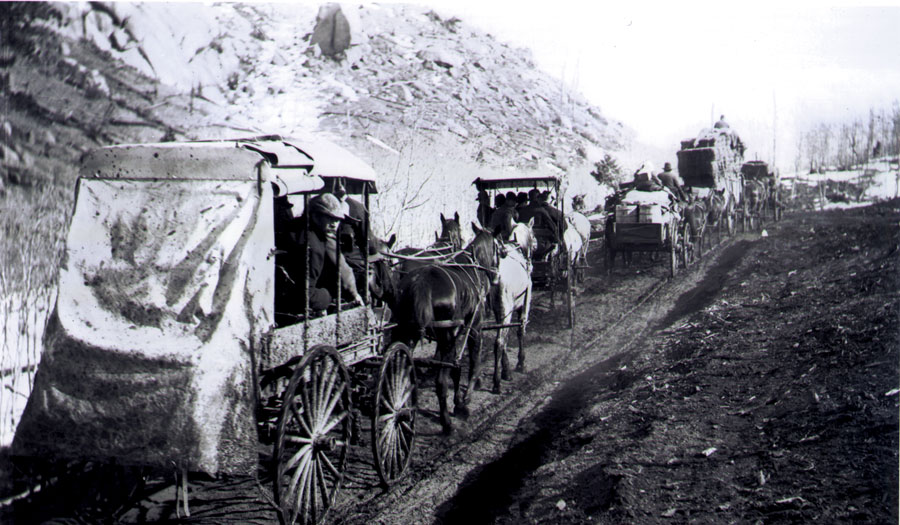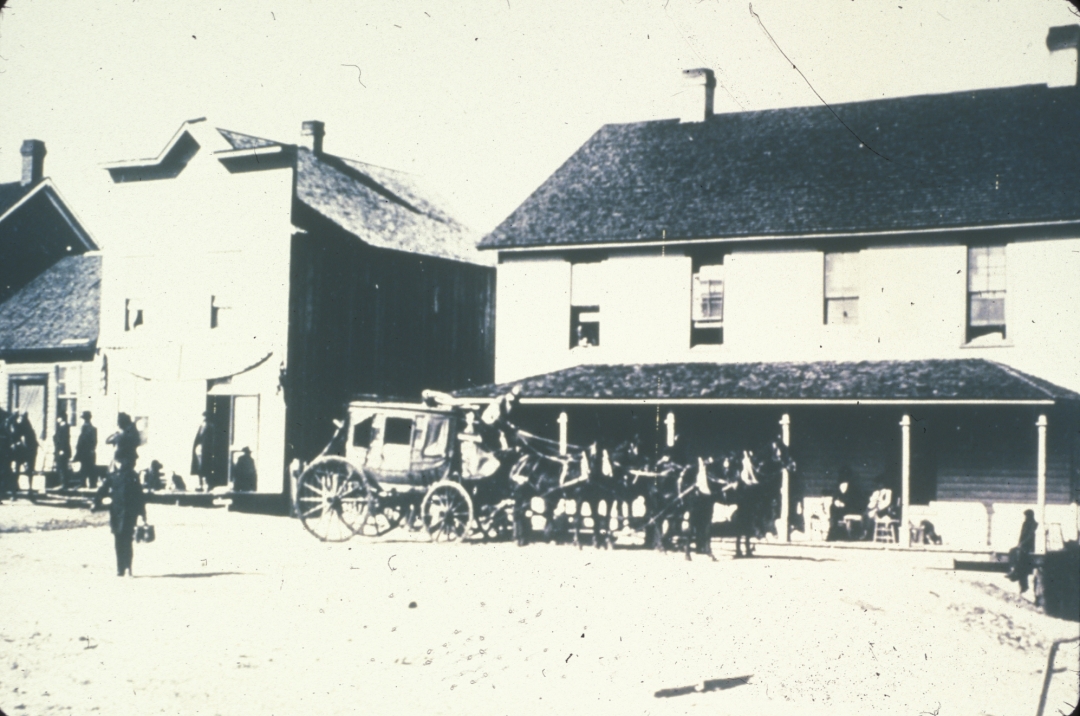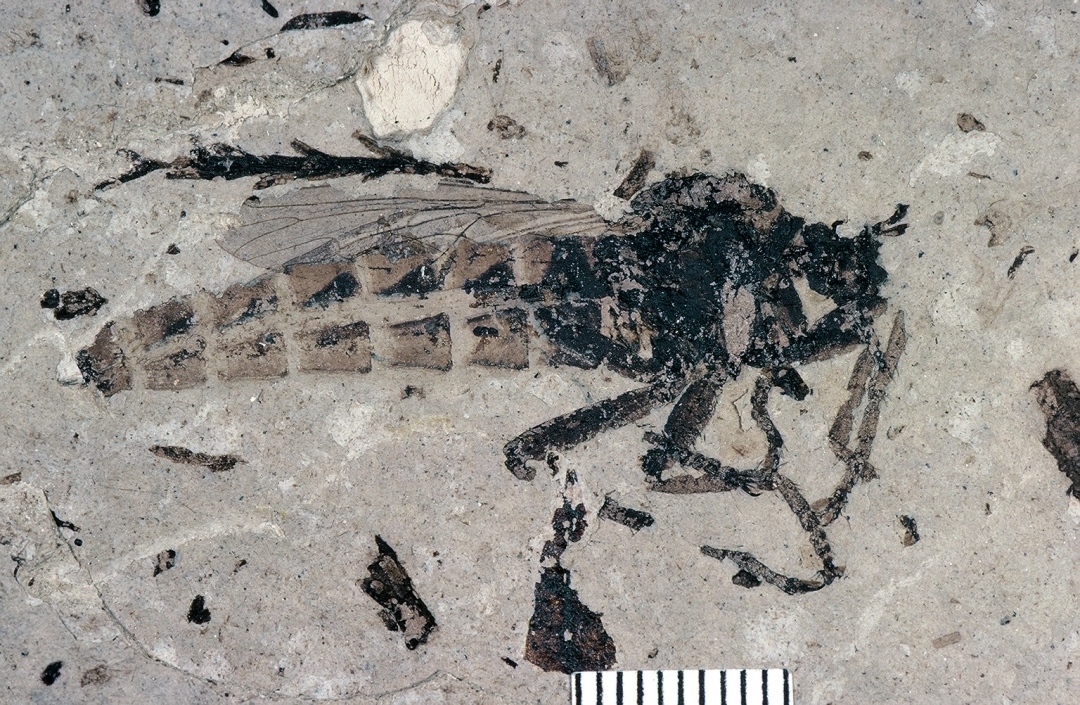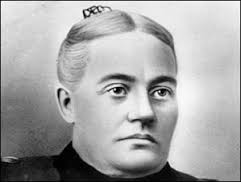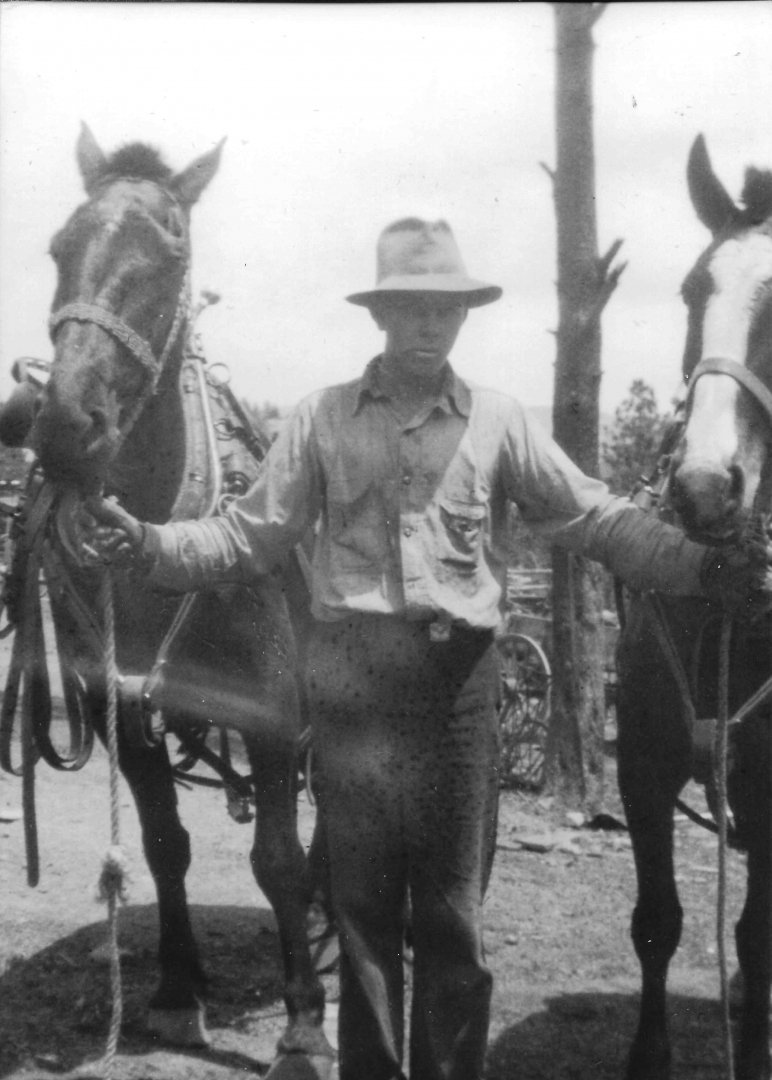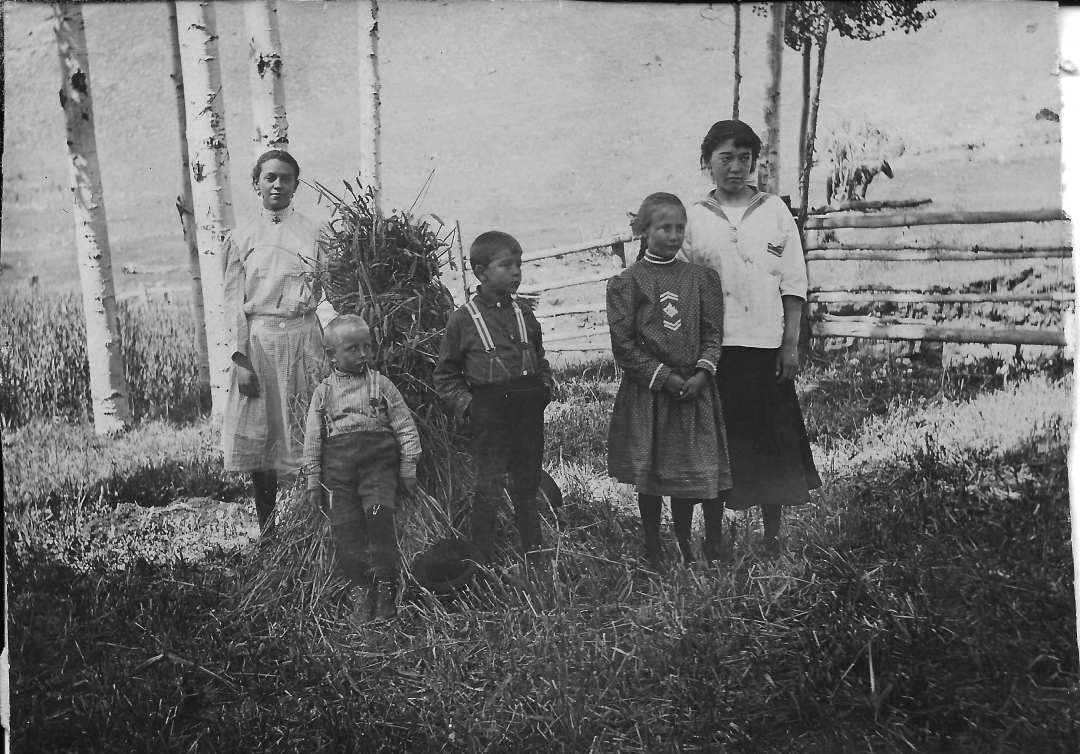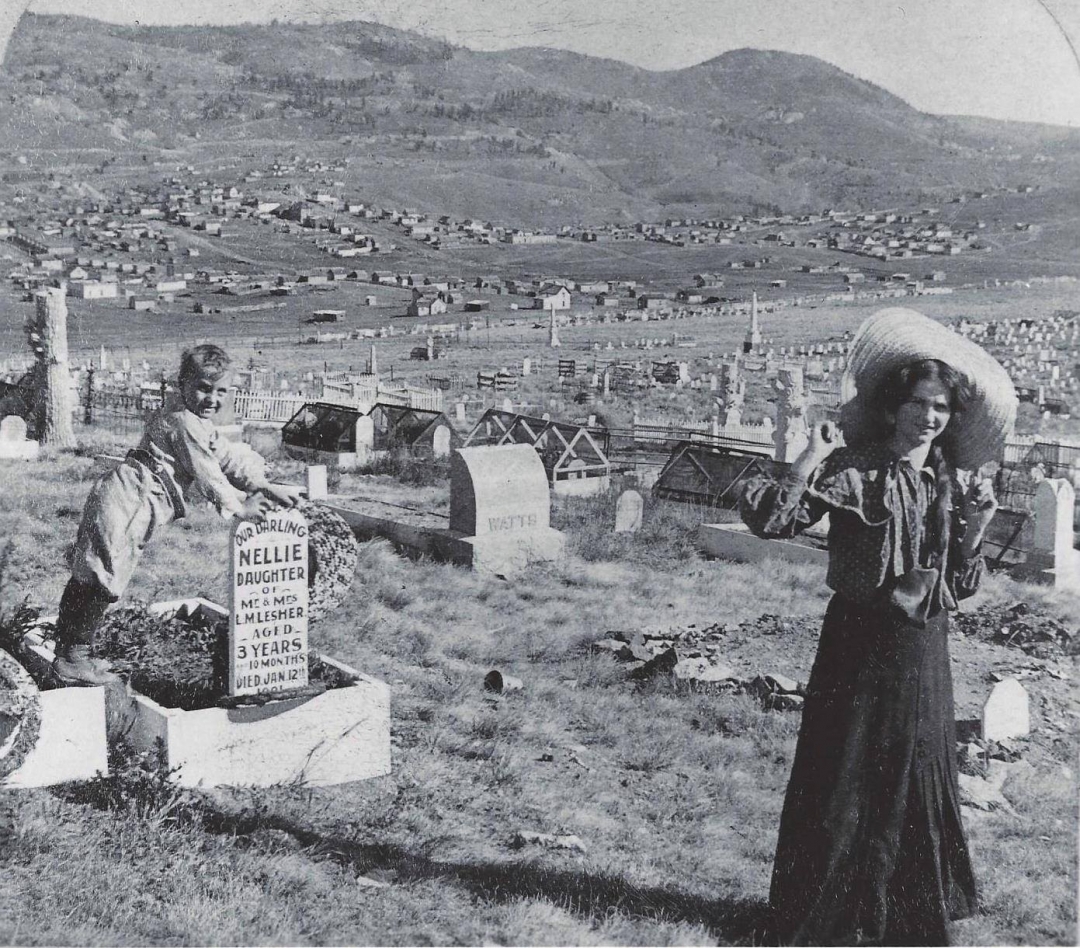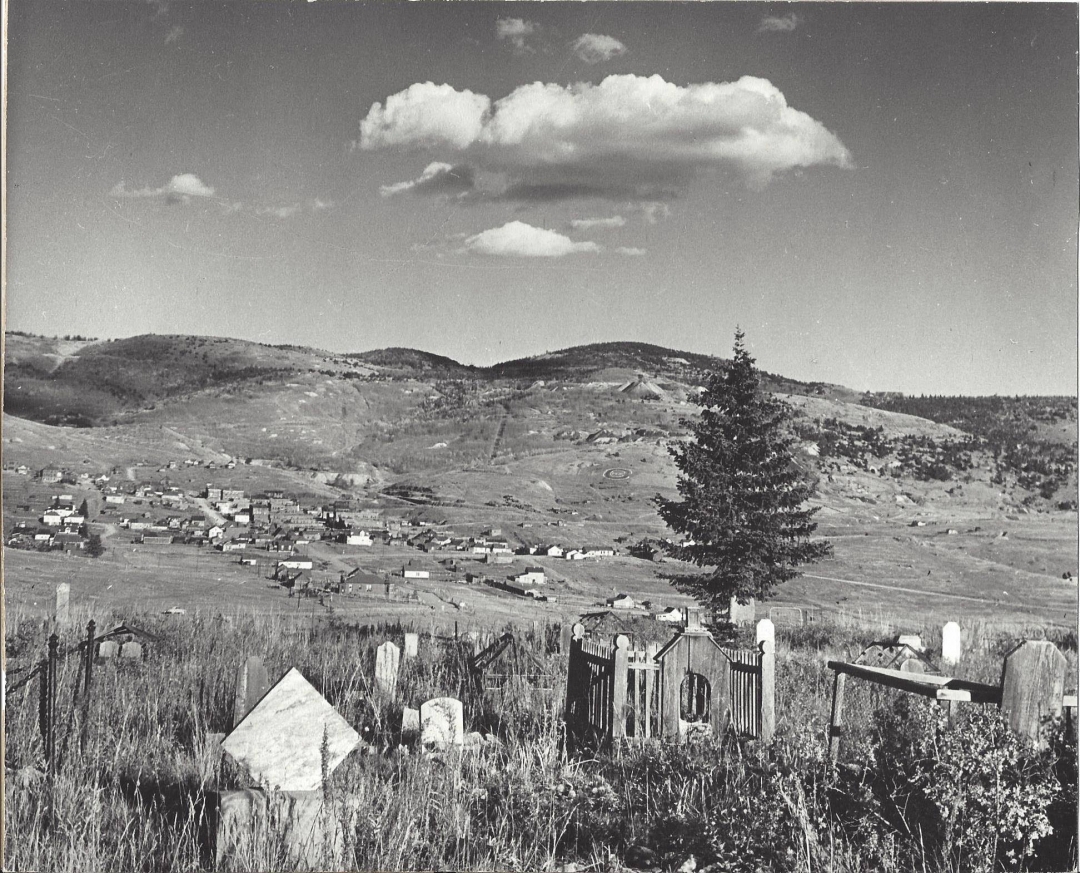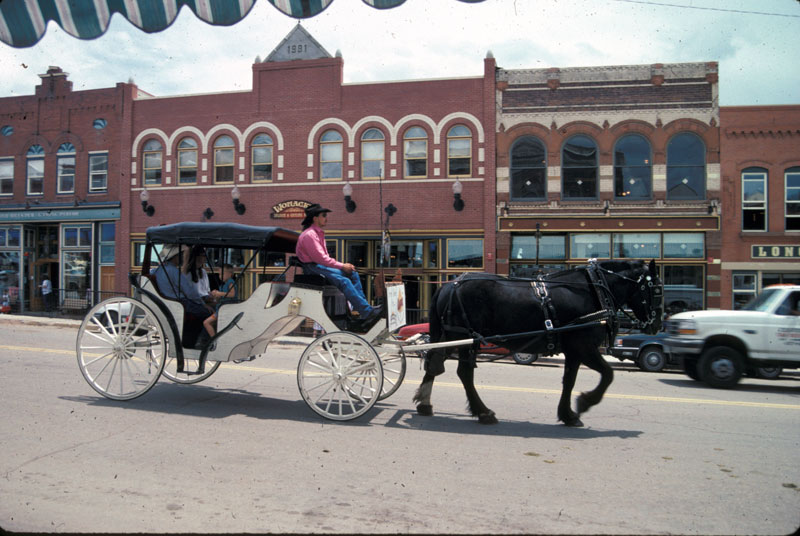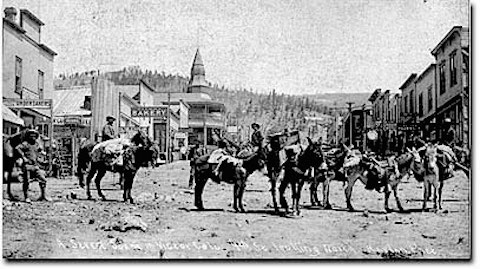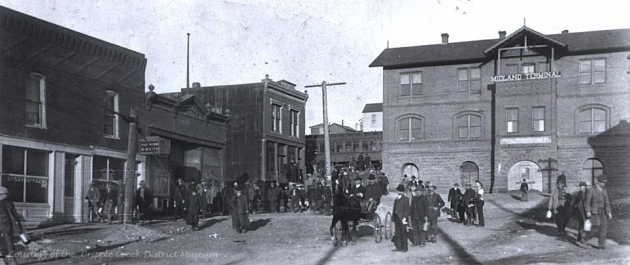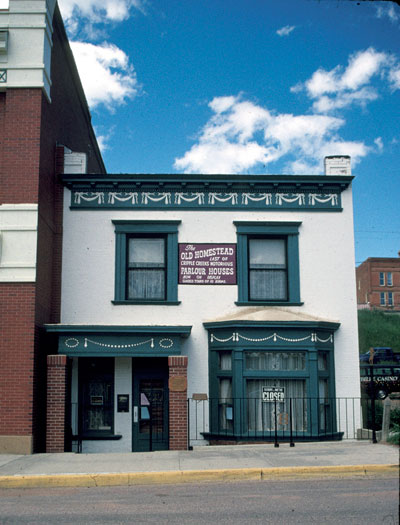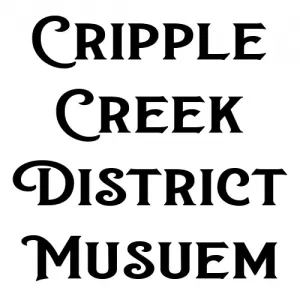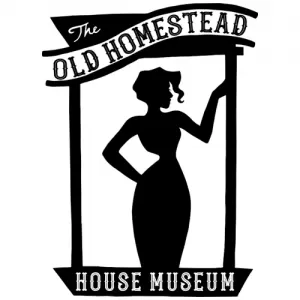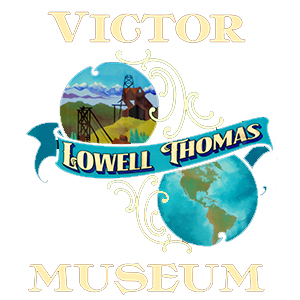Byway Attractions
Teller County Road One - 01
Teller County Road One
38.747331, -105.188680
County Road One traverses a picturesque mountain valley. It retraces the trail followed by stagecoaches and wagons traveling between the Colorado Midland Railroad depot at Florissant and the Cripple Creek Mining District. This dirt trail was one of the most direct routes to the mining district from Colorado Springs.
During the early years of the gold boom, freight wagons loaded with equipment, supplies and gold ore as well as stagecoaches of fortune seekers traversed the road daily. This important stop on the way to Cripple Creek holds a unique treasure one to rival Cripple Creek's gold.
Incredibly plant and animal fossils from 34 million years ago lie in rich fossil deposits near the town of Florissant. Today, these fossil riches are protected within Florissant Fossil Beds National Monument.
A Look at Teller County Road One
Teller County Road One - 02
Florrisant
38.946154, -105.289355
The town of Florissant grew up along the Ute Pass Wagon Road in the early 1870s when Judge James Castello established a small ranch and trading post on the banks of Twin Creek. Castello names his new home Florissant, 'flowering' in French. Ute Indians, a tribe with a long history in the area, visited the Castello home frequently and befriended the family. Chief Colorow presented Mrs. Catherine Castello with a buffalo robe that now resides in the Colorado Springs Museum.
In 1896,the Colorado Midland Railroad reached Florissant. When the Cripple Creek gold boom began around 1892, Florissant became a bustling jumping-off point for people and freight bound for the mining district. The road between Florissant and Cripple Creek carried heavier freight traffic than the shorter route between Divide and Cripple Creek because of its easier grades.
Tons of equipment and supplies traveled by freight wagon, wagons carrying gold ore transferred their freight to the Midland Railroad at Florissant for processing at mills as far away as Aspen. The Hundley State Line, the first stagecoach into Cripple Creek, operated 15 six-horse stages daily carrying passengers and mail to the mining district.
Today, visitors to this tiny hamlet can see the original Florissant School, now the Florissant Grange. The school board purchased the land from the Castello family in 1887 and the school is opened in the fall of the same year. In 1960,the Florissant Grange purchased the school continuing its history as an important focal point for the community. The original teacher's residence was also returned to the site in ---- and serves as a museum.
A Look at Florrisant
Teller County Road One - 03
Florrisant Fossil Beds National Monument
38.913639, -105.280669
This beautiful mountain valley just west of Pikes Peak holds spectacular remnants of the earth's pre-historic life. About 34 million years ago, violent volcanic eruptions in surrounding areas caused large mudflows. These mudflows buried trees in the low-lying areas of the valley to a depth of about fifteen feet. Over time, many trees petrified - turned to stone. A later mudflow created a dam at the south end of the valley and a lake, ancient Lake Florissant, filled the valley.
The lake sediments became the final resting place for thousands of insects and plants. Over time, these sediments turned to shale, preserving the delicate details of organisms as fossils.
In 1874,A.C. Peale of the Hayden Survey published a report detailing the amazing variety of fossils in the area. Since then, paleontologists have collected about 50,000 specimens for museum and universities around the world. These fossils reveal, in remarkable detail, what life of so long ago was like. In 1969, this area was set aside as part of our National Park System.
Florissant Fossil Beds National Monument is home to one of the richest fossil deposits in the world. Over 1,700 fossils of insects, plants, birds, fish, mammals and other organisms have been discovered, described and protected here. Nearly 1,500 of these fossils are insects, which are rarely preserved in the fossil record. Massive petrified redwoods, are easily seen behind the visitor center and on the 1mile Petrified Forest Trail.
The park is a 6,000 acre wonderland of pine forests, mountain meadows, beautiful scenery and wildlife. There are 14 miles of easy to moderate hiking trails to explore, self-guided and ranger guided programs, a Junior Ranger program and a state-of-the-art visitor center with exhibits, film, and a bookstore. This national park area is an active study site where an ongoing paleontology program conducts research. Discoveries are still being made!
A Look at Florrisant Fossil Beds National Monument
Teller County Road One - 04
Hornbek Homestead
38.926989, -105.281680
Adeline Hornbek, a single mother of four children, defied nineteenth century traditions to become the owner of a prosperous ranch in the Florissant Valley. In the spring of 1878, Adeline Hornbek filed a claim under The Homestead Act of 1862 to 160 acres of land about two miles south of Florissant.
Her homestead house is not the typical one-room cabin that we envision when thinking of frontier life. Instead, it is a one and one half-story, four bedroom log house with nearly a dozen glass-paned windows. It was the first two story house in the valley. Ornate Victorian-style furnishings graced the interior. Several outbuildings including a milk house, chicken house and stables completed the homestead.
(Note the outbuildings on the site were relocated from other homesteads in the area to represent the original outbuildings on the Hornbek Homestead. But yes the house is the original).
Mrs. Hornbek supported her family by raising and selling horses and working in town at the Florissant Mercantile (the general store). She became a prominent member of the growing community of Florissant, serving on the school board and hosting social gatherings in her home. By the time she filed the final papers on her homestead in 1885, the value of her property had increased nearly five times.
A Look at Hornbek Homestead
Teller County Road One - 05
Overall Fourmile Area History
38.9424729, -105.2891143
The area around Pikes Peak was the traditional territory of the Tabeguache Ute Indians. The Tabeguache, or "People of Sun Mountain," was the largest of the ten nomadic bands of the Ute. They followed the herds of wild animals throughout their lands, hunting elk, deer and buffalo at specific places at certain times of the year. They moved their camps every three to four weeks to access fresh hunting grounds. As late as the 1870s Ute encampments in the valley south of Florissant numbering 500 tepees were recorded.
In 1870 Judge James Costello established a trading post at Twin Springs, now Florissant, to trade with the Utes as they roamed the area. Two years later, he requested that a US Post Office be located there and it was named Florissant after his hometown, Florissant, Missouri. This trading post led to the gradual settlement of the valley south of Florissant along the present Teller County Rd. 1. Settlers practiced farming and ranching. Potato farming was especially successful and continued until the 1930s when the local climate became dryer and the water table in the area dropped , making commercial farming impossible.
The Colorado Midland Railroad arrived in 1887 and Florissant became the destination for "Wildflower Excursions" from Colorado Springs. Initially farmers and ranchers shipped their produce from Florissant, but after gold was discovered in Cripple Creek in 1890 agricultural produce was shipped to the mining district to feed the miners and their families.
During the gold rush, the route from Florissant to Cripple Creek, now Teller County Rd. 1, was heavily travelled. The Hundly Company established a stage line and eight coaches a day made the 20 mile trip from Florissant to Cripple Creek. Before the railroad reached Cripple Creek, gold wagons from Cripple Creek overnighted at the large Welty barn near the present Evergreen Station, halfway to the rail line in Florissant.
Potato farming is no longer possible in the valley, but many family ranches remain, some owned by the same families that established them in the late 1800s and early 1900s. Several of these ranches have been placed under conservation easements by their owners, so that they will remain available for ranching or preserved as open space into the future.
A Look at Overall Fourmile Area History
Teller County Road One - 07
Mount Pisgah Cementery
38.750050, -105.191606
In 1892, the gravelly eastern slope of Mount Pisgah held little promise for miners, merchants and homesteaders but today it is one of Cripple Creek's oldest and richest historic sites. This 40 acre cemetery includes plots for the Improved Order of Redmen, Woodmen of the World, and
Grand Army of the Republic. Many people and their families, and several individuals of "local fame and infamy" were laid to rest on this peaceful mountainside. The cemetery remains a natural site with many species of native plants and colorful wildflowers in summer. Visitors are welcome, and reminded to respect the sacred nature of the site.
A Look at Mount Pisgah Cementery
Teller County Road One - 08
Cripple Creek
38.750115, -105.191221
Cripple Creek began as two tiny hamlets called Fremont (est. 1891) and Hayden Placer (est. 1892). Nearby lay Poverty Gulch, the site of several promising gold discoveries. Tents, cabins, and flimsy wooden shelters housed hundreds of miners as the boom began. Within a few years, the two towns merged to provide better services to the thousands of people living there.
By 1900, Cripple Creek thrived as the marketing and financial center for incredible wealth flowing from the mines. The business of this era included three stock exchanges, three banks, fifty two stockbrokers, and ten insurance agents. A thoroughly modern city, Cripple Creek offered residents electricity, telegraph and telephone systems, two opera houses, eight newspapers, and transportation around the district via electric streetcars.
Today, the entire commercial and residential area of Cripple Creek is a National and mark and limited stakes gaming has revitalized Cripple Creek's economy with casinos, shops and restaurants. A self-guided walking tour of the historic downtown begins at the Cripple Creek District Museum. In the summer, the historic Butte Opera House offers a traditional melodrama, music and other fun.
A Look at Cripple Creek
Teller County Road One - 09
Cripple Creek District Museum
38.747079, -105.172354
Founded in 1953 by Blevins Davis and Richard Wayne Johnson, the Museum has 3 main buildings: The 1894 Colorado Trading & Transfer Company building,the 1895 Midland Terminal Depot that was used as a depot until 1949; and a miner's cabin circa 1890-1930. The museum is open year round and every day from Mid-May to Mid-October 10 a.m. To 5 p.m.
The last tour begins at 4:30 p.m. Located on Bennett Avenue, the museum complex contains the main buildings with six floors of mining memorabilia, maps, paintings, glass and china, children's items, furnishings, an assay office, a photograph gallery, Indian artifacts, mineral displays and two Victorian apartments.
A Look at Cripple Creek District Museum
Teller County Road One - 10
Old Homestead House Museum
38.745992, -105.175050
The Old Homestead House, last of the infamous Pleasure Palaces of Cripple Creek, stands today in quiet dignity on Myers Avenue in mute testimony to its raucous, glamorous past. Bright lights, the tinkling of pianos, the course shouts of the pleasure-seeking miners are gone but the Old Homestead remains.
The sturdy old building was erected in 1896 following the great fire and under the direction of such experts as Pearl Devere, Hazel Vernon, Neil McClusky, Laura Evans and Lola Livingston. It achieved fame as has been accorded only to such noted European Brothels as the Trois Moulins in Paris.
At the height of its fabulous career it enjoyed the finest trade, gave the grandest soirees and, in general achieved the greatest sophistication of any brothel in the Gold Camp. The Homestead's girls, in their Parisian gowns and leghorn hats, were the scorched toast of the town and the only thing they had in common with their sisters of the cribs was their profession.
At the peak of its Gold Rush period Cripple Creek had five city blocks of Red Light District, with apx. 350 girls working. The Old Homestead House was the most expensive house of pleasure, with prices starting at $50.00, only open to the most riches of men. 27 men made their millions in the district, so there was plenty of money around to spend on this guilty pleasure house.
Today only the Old Homestead House stands in testament to the heady past of Cripple Creek. 10 rooms are available on the half hour tour, running from Memorial Day thru September, 7 days a week 11am to 5 pm. Your visit to Cripple Creek, the world's greatest Gold Camp, will not be complete until you seen the treasures of the Old Homestead.
A Look at Old Homestead House Museum
Teller County Road One - 11
The Outlaw and Lawmen Museum
38.746340, -105.182039
The Outlaw and Lawmen Museum is located in Cripple Creek. Call for open hours: (719) 689-6556.
The museum once served as the Teller County Jail. This two story building located on the corner of Bennett Avenue and A Street, was opened for business in July of 1901. At that time, Cripple Creek was a booming gold mining town, full of characters from every walk of life, looking to find their fortune. For some, their dreams of gold never came to fruition, leaving many to turn to a life of crime.
The Cripple Creek Jail Museum houses 17 original cells and it served as the Teller County Jail from 1901 until its closure in 1992. 14 of those cells were reserved for men, 3 cells for females, and one holding room for juvenile delinquents . The criminals residing in this "bastille" ranged from drunk and disorderly, to murder. The Teller County Jail was the last stop before being sent to the state penitentiary in Canon City. The building was designed to hold 100 criminals, and yes, it was filled to capacity on more than one occasion.
Today, you can visit the Cripple Creek Jail Museum for a hands-on experience. There are artifacts to view, as well as, local history and even some inmate history to read about. The cells are open for you to explore, striped jail suits are available for you to put on and you can take your own mug shot for a photo memory to take home.
Pictures are welcome throughout the facility, and don't be surprised if you capture a "resident" from the past! Yes, the Cripple Creek Jail Museum is known for paranormal activity and was featured on Travel Channel's "Ghost Adventures" in August of 2010. Stop in at the Cripple Creek Jail Museum and find out who is still locked down!

